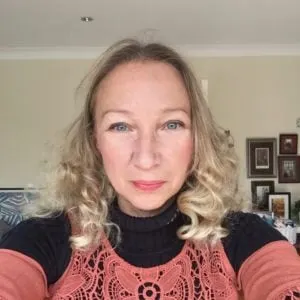In brief
- Malta, the original "Blockchain Island," failed to live up to the virtual ideal.
- Steve Tendon, the man behind the strategy, has turned to the Marshall Islands to realize his vision.
- The jurisdiction launches the world's first sovereign digital currency this year, amid much opposition.
In 2016, a software engineer-turned-management consultant came up with a concept for a futuristic economic system, as part of a blockchain course he was doing at the Massachusetts Institute of Technology.
By the following year, the tiny country of Malta had adopted Steve Tendon’s dream as its revolutionary blockchain strategy. His metaphor “Blockchain Island” came to be associated with the Mediterranean island; it became a poster child for a fully virtual jurisdiction that could connect cryptocurrencies and blockchain technologies to the rest of the global financial system.
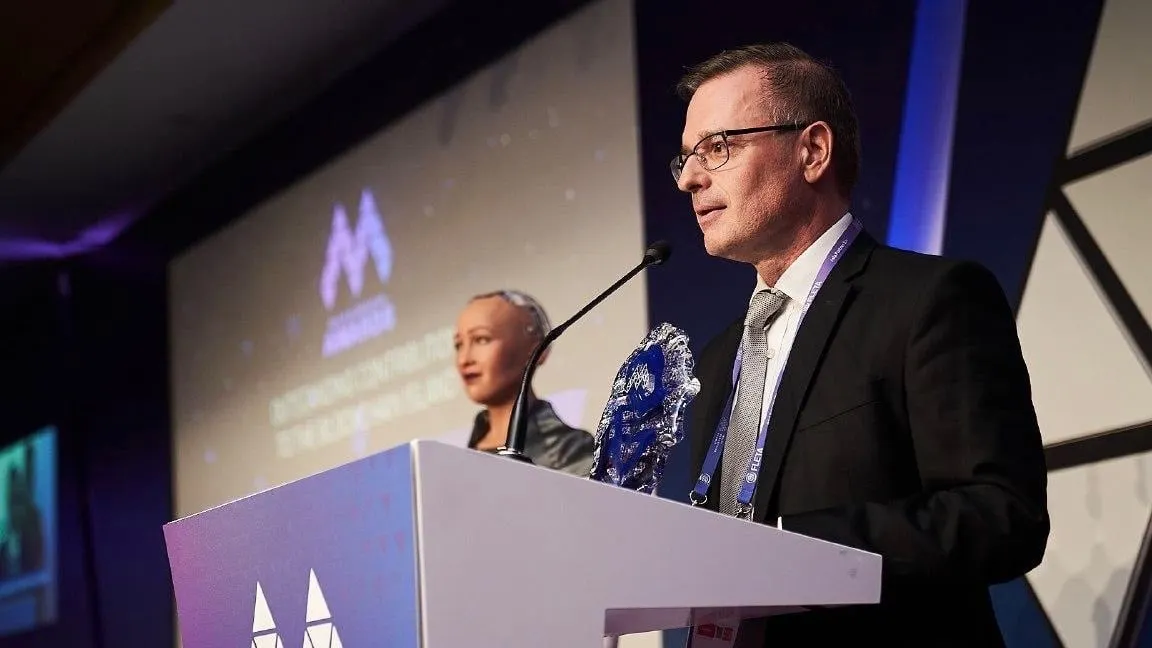
Three years later, Malta's blockchain dream is dead—but not Tendon’s dream. It migrated across oceans and continents, to another tiny island republic: Now, the Republic of the Marshall Islands (RMI) is—somewhat controversially—about to issue its own hybrid-cryptocurrency, and the ramifications could change the world.
Struck by lighting
Tendon, who is now 56 years old and living in Malta, was born in Sweden. He worked as a software engineer at Borland International in Milan, Italy in the late 80s and early 90s, and moved to Malta, where he hung out his shingle as a management consultant, in 2006. From there, he grew his consulting practice to include clients such as Bosch and leading iGaming company William-Hill.
Then, in 2015, he heard about the Ethereum blockchain, and was “struck by lightning,” as he told Decrypt recently.
The idea of melding cryptocurrencies, decentralized computation and organizational structures began to take shape in his mind. But Ethereum was too complex to explain to his clients, so he enrolled in a weekly blockchain course at MIT, to study for a certificate in fintech and blockchain.
What is being proposed here may offer a glimpse into the future of money.
When a course assignment asked students to create a governance structure for a future jurisdiction that adopted blockchain technologies, he hit on the idea of a “Blockchain Island”—a bridge from the world of decentralized technology to mainstream finance.
He connected his new-found MIT knowledge with a work system he had developed called TameFlow, about which he’s written several books. The concept relies on the so-called “theory of constraints”—essentially, a framework for a company with limited resources to achieve high performance.
When it comes to methodology, “I do many things which are outside the box,” he said.
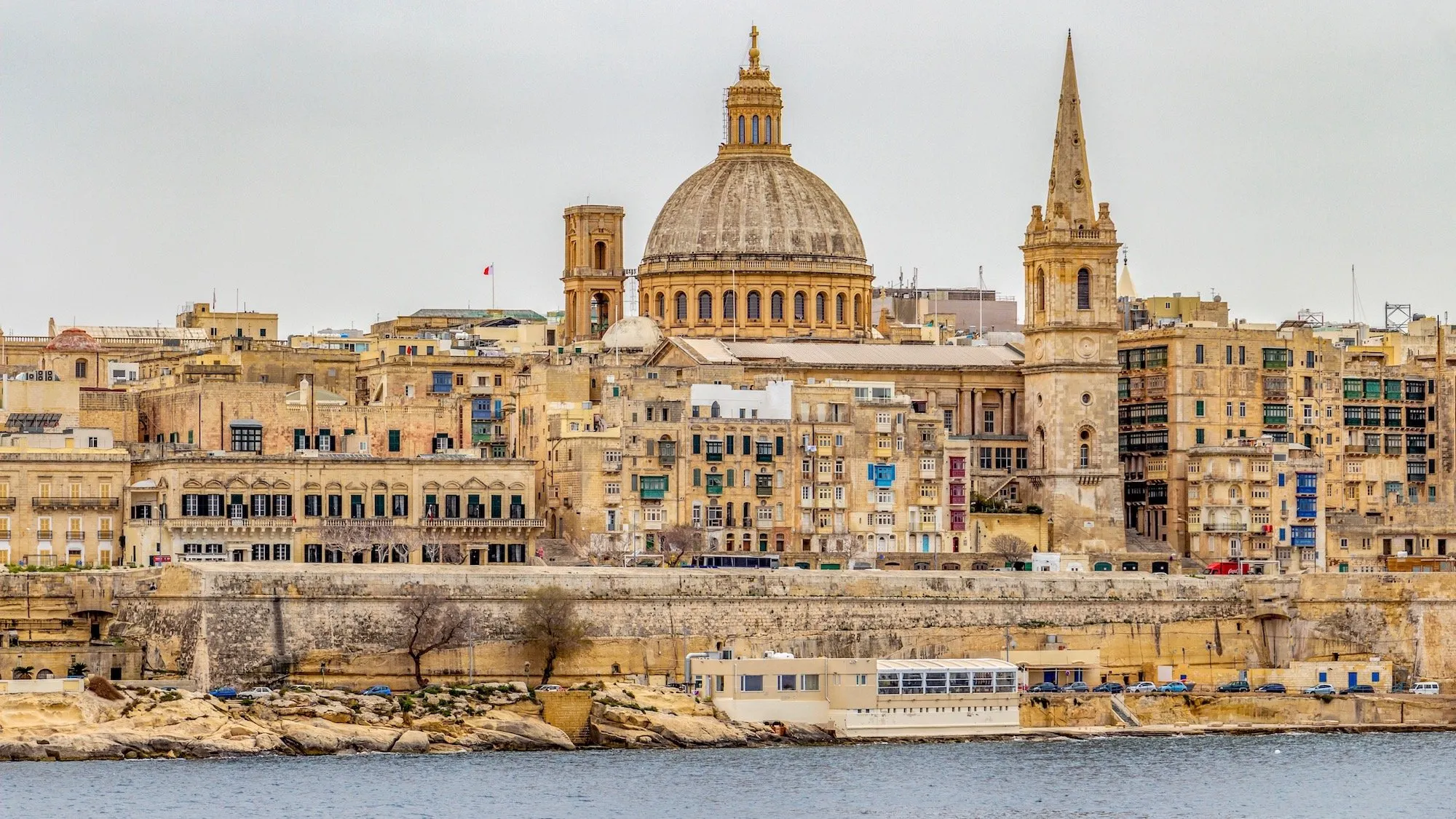
Then, serendipity struck. Tendon was asked to speak at a 2016 conference in Malta about management approaches to financial services. There, he met Chris Cardona, who was then Malta’s Minister for the Economy:
“On the fly, I improvised a pitch. ‘You know what? If a country adopts a blockchain. It could achieve…’ And there I gave a laundry list of advantages that were just reciting the outcomes of the academic exercise I did at MIT.”
The list included accelerating the speed of commercial transactions; improved registries—especially ship registration (Malta has Europe’s largest,) and unified databases across healthcare records, taxation, public disbursements, pensions, and licenses, as well as benefits for identity and residency.
Virtual jurisdictions and the theory of constraints
The minister was impressed. “The next thing I know is that this gentleman asked me, ‘Can you come and see me and tell me more about this,’” Tendon recalled.
Tendon’s theory of constraints, and his ideas for integrating cryptocurrencies with traditional financial, legal, and regulatory systems, seemed a perfect fit for Malta.
“Malta is a small island. It has few natural resources. It has to resort to services and to improve the effectiveness of these services. It could do that through blockchain technologies,” Tendon told Cardona.
The Minister for the Economy was hooked. That’s how the first “Blockchain Island” was born.

Malta’s government wasted little time and set up a dedicated department to develop what came to be known as the Virtual Financial Assets Act.
“It was a very broad mandate,” said Tendon. The first step was moving public infrastructure—such as offices and institutions—from physical to digital embodiment, on a blockchain.
The Act was passed in November 2018. But, by that time, the dream was already turning sour—for Tendon, at least.
“The ‘Blockchain Island’ expression basically became a marketing slogan to promote Malta. And it worked very well. But it lost this whole notion of being a virtual jurisdiction,” he recalled. Instead, startups were encouraged to settle on the already over-populated island.
The rug was pulled out from Blockchain Island when the Prime Minister Joseph Muscat and his inner circle were implicated in the murder of an investigative journalist, Daphne Caruana Galizia, and forced to resign. Malta’s most ambitious plans were mothballed, amid increased global scrutiny of the island.
Blockchain Island 2.0
But other nations had been studying Malta’s efforts, and developing their own strategy.
In 2018—not long after Malta published its trailblazing blockchain legislation—Tendon got a call from a New York startup, SFB Technologies, which was working on a sovereign digital token for the Republic of the Marshall Islands (RMI.)
An enclave of more than 1,100 tiny, Pacific islands, RMI is facing environmental catastrophe due to rising sea levels, and the aftermath of 12 years of US nuclear testing, centered on Bikini Atoll. (The US owes the islanders $2 billion in compensation, and many of them live in exile because their homes are still contaminated).
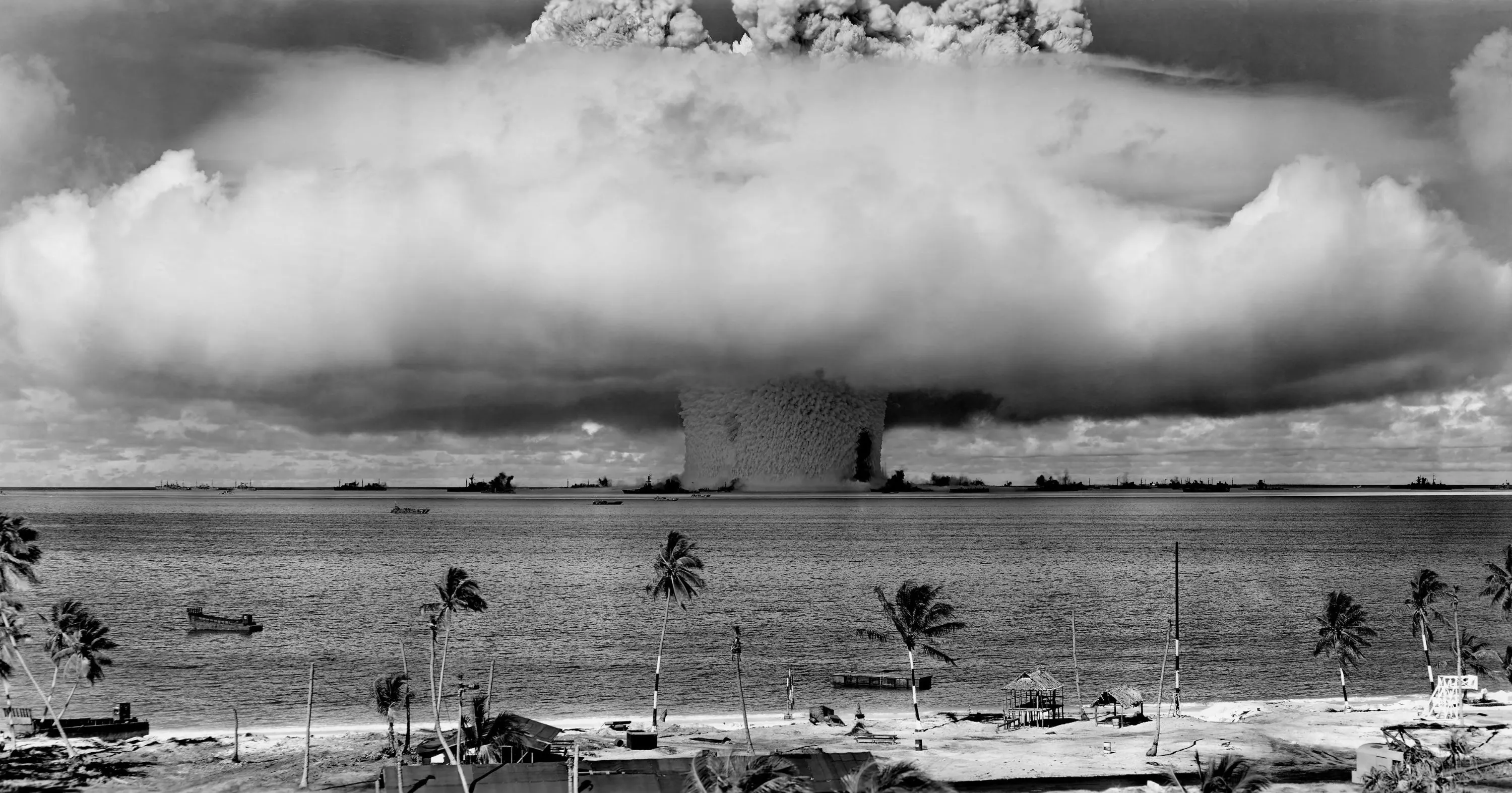
The RMI gained independence from the United States in 1979, but is heavily dependent on US assistance, under the Compact of Free Association, which expires in 2023. There are no plans to renew the agreement, and the islands are also increasingly isolated from the financial world. Bank after bank has fled, deeming RMI unprofitable in the face of increasingly stringent money laundering regulations.
Most notably, the RMI does not have a currency of its own, and is reliant on the US dollar.
Unlike European Union member Malta, the RMI is free to issue its own currency, and is too remote to insist on companies having a physical presence there: the ideal conditions for Tendon to create a true virtual jurisdiction.
The Marshall Islands Sovereign (SOV,) is expected to launch later this year, creating a precedent for a national digital currency. And that’s just for starters. Governance, e-residency, digital infrastructure for public services will all move onto a blockchain in the next development phase, said Tendon.
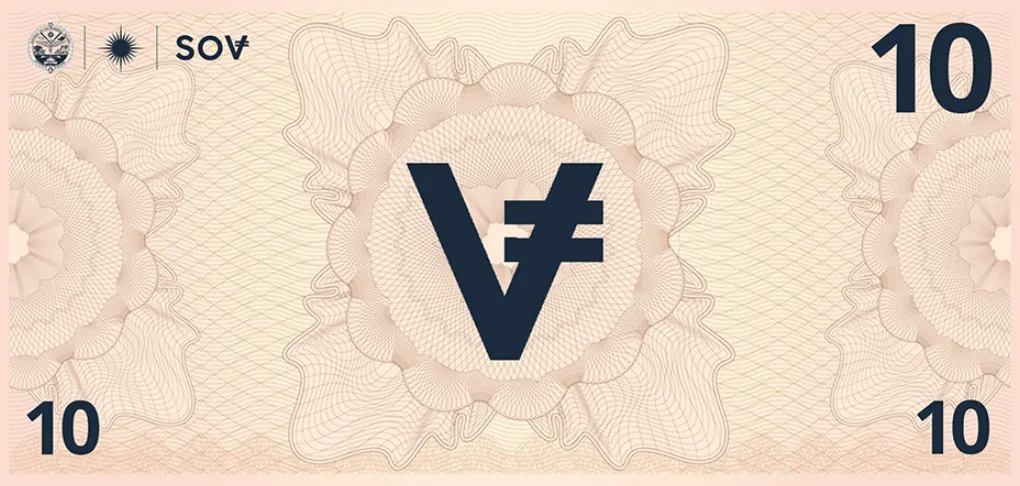
The RMI has no central bank, instead it will have computational power as its monetary regulating element. Capped at 24 million SOVs, monetary supply will increase by 4% per year, with the figure encoded on a blockchain, and each new issue will go directly to the stakeholders: RMI citizens, and other investors. It could even be described as a form of universal basic income for the islanders, said Tendon.
What could possibly go wrong?
The future of money
Well, it turns out that a hybrid “crypto-fiat-currency”, based on cryptocurrency technology but with the status of legal tender, has created quite a headache for policy makers.
Not long after the SOV was announced in 2018, the US Treasury Department said it had “serious concerns” about the plan, and the International Monetary Fund warned of economic, “reputational,” and money-laundering risks. “The risk is much bigger than the benefit they expect,” warned Joong Shik Kang, who led the IMF review. Even if it was a success, there was a danger to the RMI economy should the SOV price crash, he cautioned.
Since the IMF’s initial review, Facebook’s cryptocurrency, Libra was announced, and numerous countries (most notably China) have begun working on their own versions of a Central Bank Digital Currency (CBDC). These developments have forced policy makers to re-examine their views. But the IMF stance has not changed, Manrique Saenz, IMF Mission Chief to the Marshall Islands, told Decrypt, in an emailed statement.
“Based on information available, staff’s preliminary view is that key risks associated to the SOV discussed during the 2018 Article IV Consultation seem to remain relevant, despite further developments in the digital currency space (including CBDCs and stablecoins.) This has not yet been examined by the IMF Management or the Executive Board.”
The IMF has no authority to prevent the SOV’s launch. But, as member, the Marshall Islands pledged to support a goal of promoting global economic stability. There's also the prospect, highlighted by the IMF, that the RMI will jeopardize its last US dollar correspondent banking relationship, with First Hawaiian, if it goes ahead.
The bank called time on the relationship in 2018, and has urged the RMI to find a replacement bank. But, to date, the island government has had little success.

Economists and other experts who spoke to Decrypt held out a mixed prognosis for the SOV.
Kevin C. Desouza, Professor of Business, Technology and Strategy at Queensland University, and a Senior Fellow at the Brookings Institute, a public policy organization, said the project needs to do more to demonstrate that their platform is up to the job.
"This effort began with a lot of steam but has since slowed down. It is not on a significant agenda item for policy makers at the present time. Some of the inertia has had to do with getting large-scale buy-in across stakeholders, both within the country and with foreign entities," he explained.
"What is being proposed here may offer a glimpse into the future of money,” Edward Cartwright, Professor of Economics at De Montfort University, in the UK city of Leicester, told Decrypt. But he warned of inevitable privacy concerns, and the risk that the SOV may just benefit the rich, unless access and distribution are adequately addressed.
But despite policy-makers’ misgivings, Barak Ben-Ezer, co-founder of SFB Technologies, told Decrypt that the SOV will be issued this year.
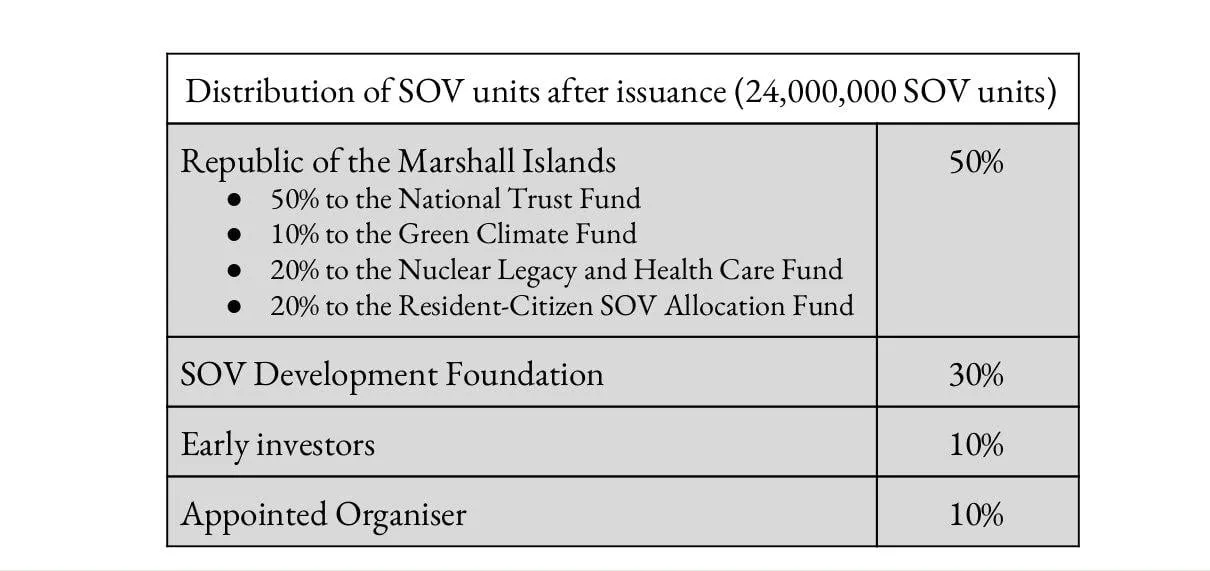
The project met with a temporary obstacle in January 2020, when an election in the RMI ushered the opposition into government. The new administration was initially skeptical about the project, said Ben-Ezer, but they’ve agreed to move forward, and SFB is even helping them to find a new correspondent bank.
“The RMI government, their partners and correspondent banks... they’re doing a little bit more checking. The banks will have sufficient time to see how everything works compliance-wise, and the SOV itself will be issued after those things are done,” he explained.
In the meantime, he said the hybrid cryptocurrency will be rolled out in a series of auctions to the rights of the future SOV currency—a process termed “time-release monetary issuance.”
Seeking legitimacy
According to the whitepaper, 40% of the new money will go to repair damage from nuclear testing, and finance climate change initiatives—building dams and other capital-intensive infrastructure projects at a scale RMI can’t afford to finance today; 10% ($2.4 million) will go to Marshallese citizens in payments made over five years; 10% is allocated to investors (SFB said that, should the SOV not launch, they will be refunded) and the remainder will finance economic and technological development of the hybrid-cryptocurrency.
The project’s partners include Peter Dittus who was formerly Secretary General of the Bank for International Settlements; Patrick Friedman, grandson of the eminent economist Milton Friedman, whose k-percent rule inspired the SOV, and—most recently—Silvio Micali, founder of the Algorand blockchain, which will host the cryptocurrency.
Micali is the inventor of zero knowledge proofs—a protocol which helps to establish identity, without abusing privacy. His knowledge will be crucial in introducing self-sovereign identity, another key goal of the project.
Tendon and the others are confident that the decision makers are coming closer to their point of view.
“We’ve seen a significant mind set change. In part because of initiatives taking place in countries like China that have caused the US to wake up in response,” said Joel Telpner, a lawyer at Sullivan & Worcester LLP, who has been advising the Marshall Islands on the SOV.
“Covid is causing challenges as far as money distribution, supply, and flow. The IMF, Treasury, Fed, and other governments are looking at digital currencies in a fresh light, from a much more positive perspective than we saw when the concept of the SOV was first introduced,” he said, speaking at the Consensus Distributed conference earlier this month.
Meanwhile, other Pacific Island countries with scant funds and their own international banking problems have already said they want to follow the Marshall Islands’ lead.
“The decisions that come out of this country will have global effects. The advanced economies of the world will have to pay attention because, at some point, even a micro state could become a crypto economic superpower,” said Tendon.
Geographically decentralized, almost entirely isolated, and at risk of disappearing altogether, the Marshall Islands was identified as the perfect testing ground for destructive nuclear technology. Now, it will be the site of a crypto economic experiment at scale. Or, as the regulators may suspect, a risky get-rich-quick scheme. Call it what you will, RMI needs an effective monetary system. Right now, becoming the first, real Blockchain Island would fit that bill.
And Tendon? He hopes to visit one day.




